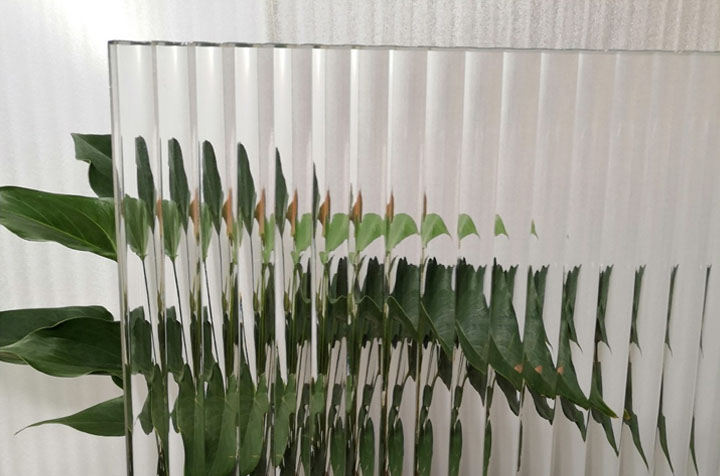The Float Glass Manufacturing Process
The float glass manufacturing process is a revolutionary technique that has transformed the glass industry. Introduced in the mid-20th century, this method produces high-quality, flat glass that is extensively used in construction, automotive, and household applications. The sleek, transparent qualities of float glass make it a preferred choice for windows, mirrors, and various architectural features.
The process begins with raw materials, primarily silica sand, soda ash, and limestone. These materials are precisely measured and combined to form a batch. The quality of these raw materials is crucial since it directly influences the final product's clarity and strength. Special additives may also be included to enhance specific properties such as color or UV resistance.
Once the batch ingredients are ready, they are fed into a furnace where they are heated to temperatures around 1,700 degrees Celsius (3,092 degrees Fahrenheit). This extreme heat causes the raw materials to melt, forming molten glass. The design of the furnace is important, as it ensures efficient heating and minimizes the introduction of impurities.
After the glass has melted, it is carefully poured onto a bed of molten tin in a controlled environment. This is where the term float glass originates. The glass floats on the surface of the tin, spreading out evenly and forming a smooth surface. The buoyant property of the tin allows the glass to take on a uniform thickness and a flawless finish, eliminating the need for grinding or polishing afterward.
float glass manufacturing process
As the glass cools on the tin bath, it is monitored for thickness and quality. The cooling process is critical to maintaining the structural integrity of the glass and preventing defects. Once the glass has reached a stable temperature, it is gradually transferred to an annealing lehr, where it is further cooled in a controlled manner. This process relieves internal stresses within the glass, ensuring durability.
After completing the annealing process, the float glass is cut into various sizes and shapes, depending on market needs. Cutting is typically performed using diamond-tipped saws or automated cutting equipment that ensures precision and reduces waste. The finished glass is then inspected for quality, with any defects being identified and addressed before shipping.
The float glass manufacturing process is not only efficient but also environmentally conscious. Modern production facilities are designed to minimize energy consumption and reduce waste products. Recycling of glass is also integral, with many manufacturers incorporating recycled material into their batches, thus promoting sustainability within the industry.
In conclusion, the float glass manufacturing process is a remarkable fusion of science and engineering, ensuring the production of high-quality glass suited for a multitude of applications. Its innovative method of forming glass on a bed of molten tin exemplifies the continuous advancements in manufacturing technology that help to meet the ever-growing demand for superior glass products.
 Afrikaans
Afrikaans  Albanian
Albanian  Amharic
Amharic  Arabic
Arabic  Armenian
Armenian  Azerbaijani
Azerbaijani  Basque
Basque  Belarusian
Belarusian  Bengali
Bengali  Bosnian
Bosnian  Bulgarian
Bulgarian  Catalan
Catalan  Cebuano
Cebuano  Corsican
Corsican  Croatian
Croatian  Czech
Czech  Danish
Danish  Dutch
Dutch  English
English  Esperanto
Esperanto  Estonian
Estonian  Finnish
Finnish  French
French  Frisian
Frisian  Galician
Galician  Georgian
Georgian  German
German  Greek
Greek  Gujarati
Gujarati  Haitian Creole
Haitian Creole  hausa
hausa  hawaiian
hawaiian  Hebrew
Hebrew  Hindi
Hindi  Miao
Miao  Hungarian
Hungarian  Icelandic
Icelandic  igbo
igbo  Indonesian
Indonesian  irish
irish  Italian
Italian  Japanese
Japanese  Javanese
Javanese  Kannada
Kannada  kazakh
kazakh  Khmer
Khmer  Rwandese
Rwandese  Korean
Korean  Kurdish
Kurdish  Kyrgyz
Kyrgyz  Lao
Lao  Latin
Latin  Latvian
Latvian  Lithuanian
Lithuanian  Luxembourgish
Luxembourgish  Macedonian
Macedonian  Malgashi
Malgashi  Malay
Malay  Malayalam
Malayalam  Maltese
Maltese  Maori
Maori  Marathi
Marathi  Mongolian
Mongolian  Myanmar
Myanmar  Nepali
Nepali  Norwegian
Norwegian  Norwegian
Norwegian  Occitan
Occitan  Pashto
Pashto  Persian
Persian  Polish
Polish  Portuguese
Portuguese  Punjabi
Punjabi  Romanian
Romanian  Russian
Russian  Samoan
Samoan  Scottish Gaelic
Scottish Gaelic  Serbian
Serbian  Sesotho
Sesotho  Shona
Shona  Sindhi
Sindhi  Sinhala
Sinhala  Slovak
Slovak  Slovenian
Slovenian  Somali
Somali  Spanish
Spanish  Sundanese
Sundanese  Swahili
Swahili  Swedish
Swedish  Tagalog
Tagalog  Tajik
Tajik  Tamil
Tamil  Tatar
Tatar  Telugu
Telugu  Thai
Thai  Turkish
Turkish  Turkmen
Turkmen  Ukrainian
Ukrainian  Urdu
Urdu  Uighur
Uighur  Uzbek
Uzbek  Vietnamese
Vietnamese  Welsh
Welsh  Bantu
Bantu  Yiddish
Yiddish  Yoruba
Yoruba  Zulu
Zulu 

